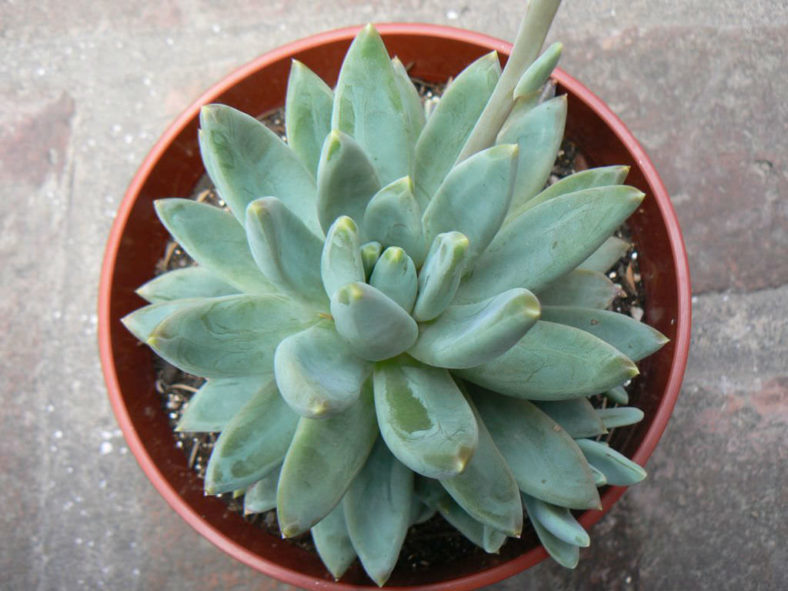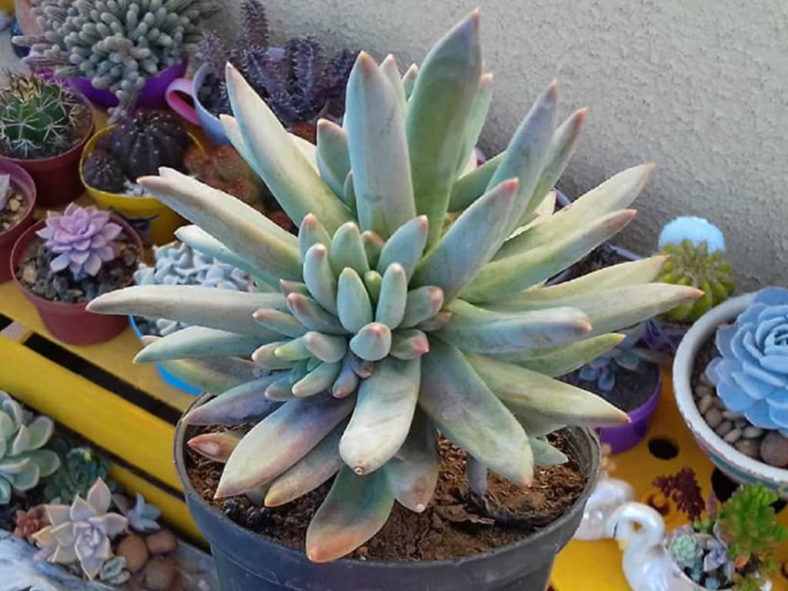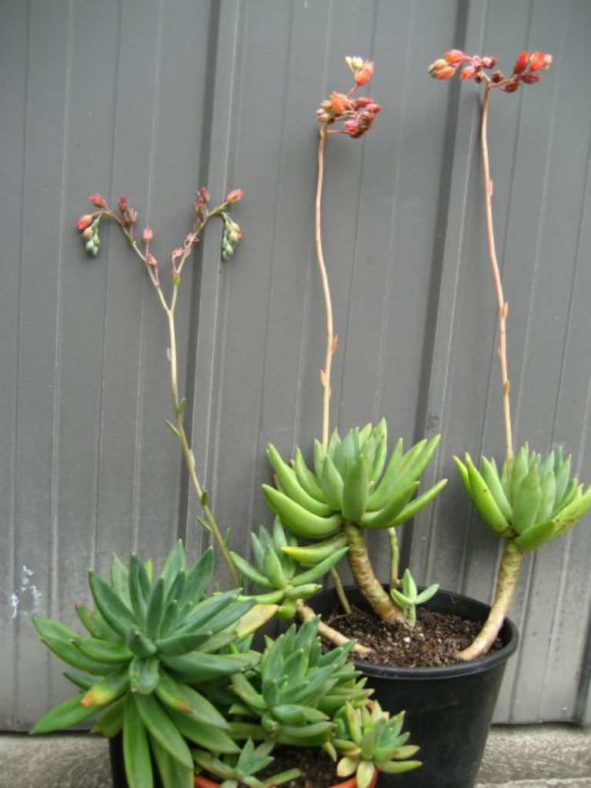Scientific Name
×Pachyveria 'Bea'
Scientific Classification
Family: Crassulaceae
Subfamily: Sempervivoideae
Tribe: Sedeae
Nothogenus: ×Pachyveria
Origin
×Pachyveria 'Bea' is an intergeneric hybrid that results from a cross between Pachyphytum compactum and unknown Echeveria. It is named in honor of Beatriz Prestamo, who was very engaged in introducing succulents in Argentina at the end of the last century.
Description
×Pachyveria 'Bea' is a small succulent with upright, somewhat pointed, frosty green leaves congested in the uppermost part of the stems. It is often basally branched and can grow up to 6 inches (15 cm) tall. The leaves show faint, netlike markings resembling those of its parent, Pachyphytum compactum.
The flowers are bell-shaped, pinkish-orange, and appear on tall, branched stalks in late spring.
J. C. van Keppel has described this plant as ×Pachyveria 'Glauca', which is incorrect because the parentage of ×Pachyveria 'Glauca' is Pachyphytum hookeri and unknown Echeveria.

Hardiness
USDA hardiness zones 9a to 11b: from 20 °F (−6.7 °C) to 50 °F (+10 °C).
How to Grow and Care
Pachyphytum will not tolerate frosts well. Temperatures below 20 °F (-6 °C) will kill the plant, and temperatures that may go below 45 °F (7 °C) during an extended period should be avoided. It tolerates high heat and intense sunlight. As with most succulents from the Crassulaceae family, Pachyphytum can tolerate (and even appreciate) poor soil conditions so long as it is well-draining. It can thrive in full or partial sunlight.
Allow the soil to dry out before watering, and avoid getting water on the leaves. The plants will require more water in winter as winter begins its active growing season. If you are unsure when to water your plant, watch the lowermost leaves for drying signs and water them then. Pachyphytum is far more likely to survive under-watering than overwatering. The thick, fleshy leaves will appear wilted and slightly "under-full" when they need water.
One of the most common pests to houseplants is the mealybug, and your Pachyphytum may fall prey to this pest. The symptoms of a mealybug infestation are slowed or stopped growth (in summer, this is a typical sign of dormancy). If this occurs without apparent cause, remove the plant from the pot and examine the roots or the leaf-stem junctions.
Learn more at How to Grow and Care for Pachyphytum.
Links
- Back to nothogenus ×Pachyveria
- Succupedia: Browse succulents by Scientific Name, Common Name, Genus, Family, USDA Hardiness Zone, Origin, or cacti by Genus
Photo Gallery
Click on a photo to see a larger version.


